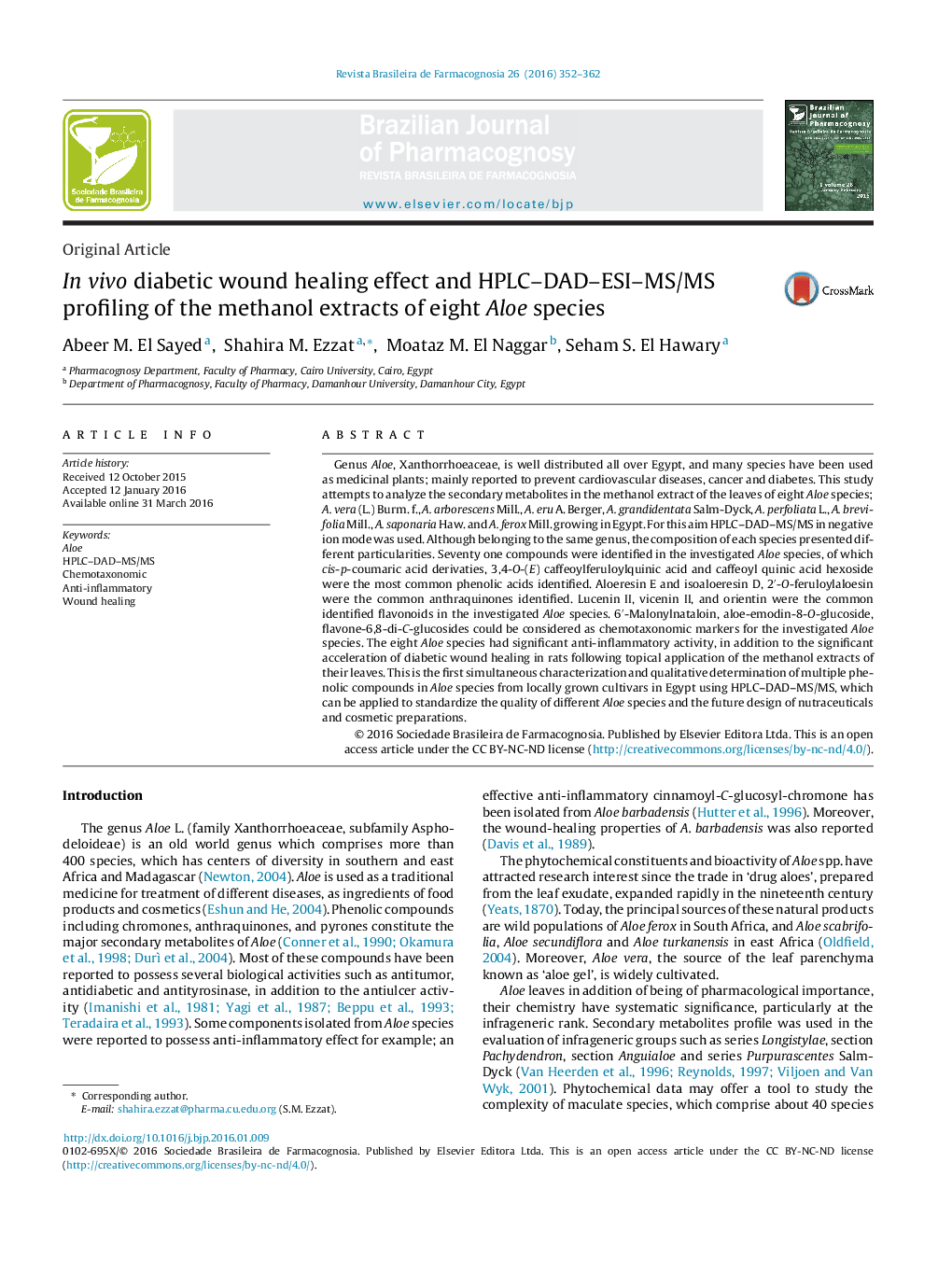| کد مقاله | کد نشریه | سال انتشار | مقاله انگلیسی | نسخه تمام متن |
|---|---|---|---|---|
| 2577603 | 1129952 | 2016 | 11 صفحه PDF | دانلود رایگان |

Genus Aloe, Xanthorrhoeaceae, is well distributed all over Egypt, and many species have been used as medicinal plants; mainly reported to prevent cardiovascular diseases, cancer and diabetes. This study attempts to analyze the secondary metabolites in the methanol extract of the leaves of eight Aloe species; A. vera (L.) Burm. f., A. arborescens Mill., A. eru A. Berger, A. grandidentata Salm-Dyck, A. perfoliata L., A. brevifolia Mill., A. saponaria Haw. and A. ferox Mill. growing in Egypt. For this aim HPLC–DAD–MS/MS in negative ion mode was used. Although belonging to the same genus, the composition of each species presented different particularities. Seventy one compounds were identified in the investigated Aloe species, of which cis-p-coumaric acid derivaties, 3,4-O-(E) caffeoylferuloylquinic acid and caffeoyl quinic acid hexoside were the most common phenolic acids identified. Aloeresin E and isoaloeresin D, 2′-O-feruloylaloesin were the common anthraquinones identified. Lucenin II, vicenin II, and orientin were the common identified flavonoids in the investigated Aloe species. 6′-Malonylnataloin, aloe-emodin-8-O-glucoside, flavone-6,8-di-C-glucosides could be considered as chemotaxonomic markers for the investigated Aloe species. The eight Aloe species had significant anti-inflammatory activity, in addition to the significant acceleration of diabetic wound healing in rats following topical application of the methanol extracts of their leaves. This is the first simultaneous characterization and qualitative determination of multiple phenolic compounds in Aloe species from locally grown cultivars in Egypt using HPLC–DAD–MS/MS, which can be applied to standardize the quality of different Aloe species and the future design of nutraceuticals and cosmetic preparations.
Figure optionsDownload as PowerPoint slide
Journal: Revista Brasileira de Farmacognosia - Volume 26, Issue 3, May–June 2016, Pages 352–362